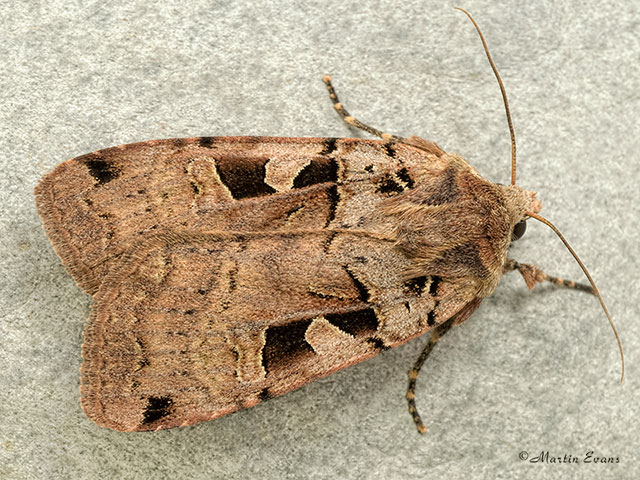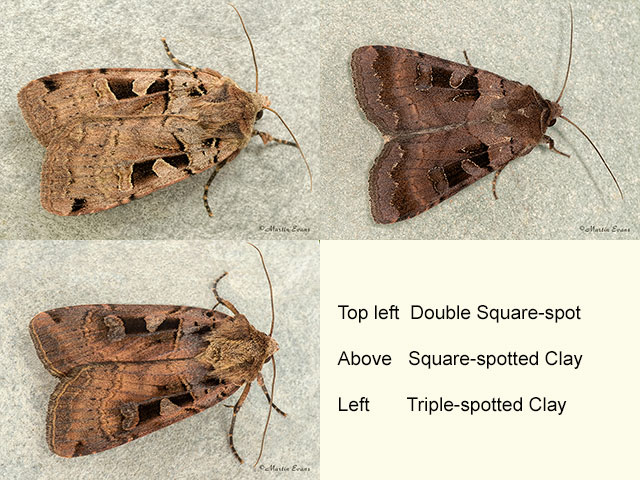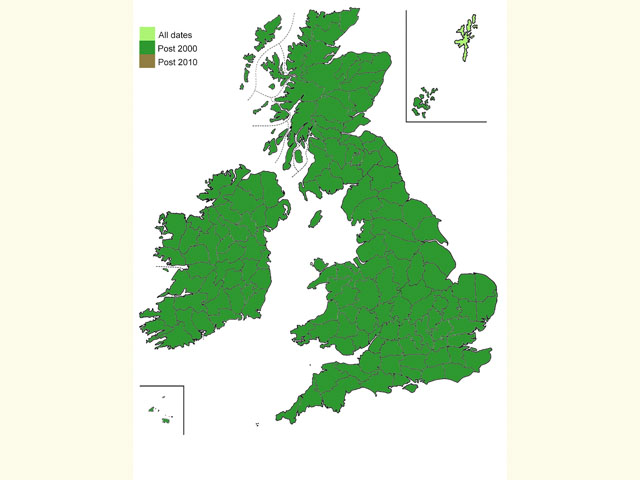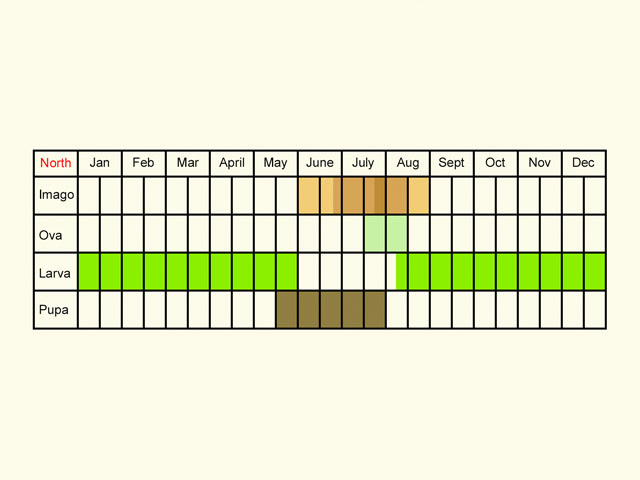Noctuidae
73.361 Double Square-spot Xestia triangulum (Hufnagel, 1766)
Common
Similar species: Square-spotted Clay Xestia stigmatica lacks the black dash near the apex of the forewing, but instead has a wavy dark shade across the wing from this point. Triple-spotted Clay Xestia ditrapezium is darker and more rufous, occasionally with a purple sheen around the darker markings.
Forewing: 17 to 19mm
Habitats: Deciduous woodland, parkland, scrub, hedgerows, stream margins, arable margins, coastal grassland, sand-dunes and gardens.
Habits: The moth nectars at flowers and is attracted to sugar and light.
Foodplant: The nocturnal larva feeds on Dandelion, docks, Cow Parsley, Wood Spurge, plantains, buttercups, Primrose and other herbaceous plants. In the spring it feeds mainly on woody species including birches, Bramble, Raspberry, sallows, Hawthorn and Blackthorn. It hides in loose soil or leaf litter during the day. Pupation takes place in a cocoon under the soil.
On the European mainland it has also been recorded feeding on Common Nettle, dead-nettles and Traveller's Joy.





